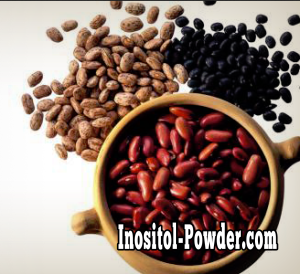What is Inositol?
Inositol, which is also known as myo-Inositol, is similar to a carbohydrate, but it is part of the Vitamin B complex, although it’s not technically a vitamin either. Myo-Inositol has a lot of similarities to choline, but it acts like a lipotropic agent in the body, and can help emulsify body fats. One of the interesting things about Inositol, is that you can find Inositol within the body as part of the glucose process, so it’s something that naturally occurs in the body to some degree. The synthesis of myo-Inositol occurs in the kidneys, and it’s very important for the structural basis of secondary messengers, such as what is found in eukaryotic cells. Inositol helps breakdown the fats in the body, helps guide the nerve signals, is responsible for calcium concentration, and also helps gene expression. A really good aspect of Inositol is that there is no known toxicity related to it, which means you can take it for a medical condition, and not have to worry about harming your body or accidentally overdosing.
Where Can You Find Inositol?
You can find Inositol in a variety of plants and animals, with it being part of phospholipids in animals and part of phytic acid in plants. If you drink a lot of coffee or other caffeine products, you can actually start to deplete the naturally-occurring Inositol that is found within the body. You can find Inositol in whole grains, citrus fruits like oranges and cantaloupes, liver, unrefined molasses, and brewer’s yeast. You can also find Inositol in products such as lecithin, nuts, cabbage, raisins, lima beans, wheat germ, and even peanuts. You might also be interested in knowing that even some energy drinks contain levels of Inositol, which is curious considering caffeine such as coffee is known to deplete this substance over time.
Common Uses For Inositol
When it comes to using Inositol in a clinical setting, you might be surprised to learn that there are a variety of medical conditions that can be treated using Inositol. When talking about using Inositol as a treatment option, most of the time, a dose of about 500 to 600 milligrams is given, which can be adjusted as needed depending on the disease. Some of the conditions include diabetic nerve pain, insomnia, cancer, depression, panic disorder, high cholesterol, and obsessive-compulsive disorder. You can also use Inositol to help treat attention deficit-hyperactivity disorder, autism, Alzheimer’s disease, schizophrenia, psoriasis, and can even help your hair grow. Inositol has also been used to treat the symptoms associated with poly-cystic ovarian syndrome. As far as psoriasis goes, the only time Inositol seems to help is when people have been taking lithium and that treatment has made psoriasis worse. There have also been cases of Inositol being used as a treatment option for acute respiratory distress syndrome in infants, but the substance must be used intravenously for this treatment to be effective.
Inositol Dosage Information
If you are planning on using Inositol for anxiety the recommended dose is 18,000 mg per day, which should be divided up into 3 sections of 3,000 mg each. You can take it in power form or pill form, but a lot of people prefer powder form since that’s a high dose to take in 1,000 mg per pill form. If you have a mild form of anxiety you can go with taking 12,000 mg a day, which is divided up into 2,000 mg 3x per day. So there is a range that you can alter if you feel that 12,000 mg isn’t doing enough, you can increase it 1,000 mg each week until you find a suitable dose, up to 18,000 mg.
If you have psoriasis and are using lithium as part of the treatment, you want to get servings of about 6,000 mg per day. You can divide this up into 2,000 mg 3x a day or you can take 3,000 mg 2x a day, it just depends on what your schedule is like. Some people prefer to take a mid-day dose along with one in the morning and one at night, while other people like taking only 2 doses per day just with a bigger dosage each time. If you feel like you are getting an upset stomach at all or getting gassy due to the Inositol, you can always adjust the dose as needed, taking it more times throughout the day as opposed to 2 bigger doses.
If you are using Inositol as part of a treatment plan for poly-cystic ovarian syndrome, you will need to take the D-Chiro-Inositol at a dose of about 1200 mg a day. This means that you will need to take about 4,000 mg 3x a day or you can divide that up into 3,000 mg 4x a day if needed. You can either take this in pill form you you can take the powder form which dissolves in drinks.
If you are using Inositol to help you sleep then you want to be taking about 1,000 mg per night a few hours before bedtime. You can take either the pill or you can ingest the powder form by mixing it into a drink. You can adjust the dose as needed with some people only needing 500 mg and other people needing all the way up to 2,000 mg to help them sleep. It’s best to start off on the smaller side and then work your way up to 1,500 or 2,000 mg after a couple weeks if you think you need more of a boost.





